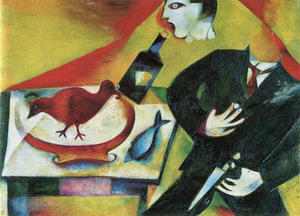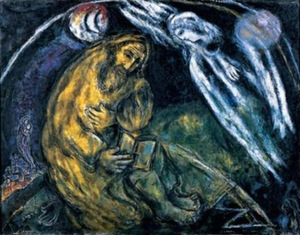Marc Chagall: tamed imagination 0
In brief: Marc Chagall, unambiguously seen by art critics and historians as the greatest and most famous 20th century Jewish artist, was born in the present territory of Belarus, which then belonged to the Russian empire.
Jewishness in M. Chagall's work unfolds on the basis of the relationship between imagination and tangible narrated situation. Artist who would have learned the principles of painting from reputable authority, and who would have kept this humility throughout his life, would not have been able to create such works as the ones painted and drawn by M. Chagall. His work is a constant resistance to fate, authority and teachers. It is even a dispute with God. The reality of childhood, which M. Chagall, just like other people, has kept in his mind, dictated the themes of works, the motifs and style.
M. Chagall's genius opens up a new research direction of psychoanalysis. Its central claim would be that genius is usually very limited in the realm of reality. Because of particular sensitivity he rapidly loses voice, thus having a larger than mediocre experience of Reality, the expression of which through visual language becomes the genius' life cause, aim and meaning. The experience of reality is more innate, but we learn how to behave in reality. M. Chagall's oeuvre is dream-like, attributable to magic realism. Artist does not care about telling the story; he does not seek consistency and figurative painting. Dream experiences are more real to M. Chagall and more authentic than sociability or politics (this is one of the many reasons why he did not fit in Russia).
Magic realism is a very important art style for Jewish artists because it frees from a verbal language. Visuality, from the perspective of Judaism, becomes untroubled and in the exile it creates a strong faith in God. On the other hand, it is a very different faith than it was before the 20th century, when it was understood that monumental integrity in art and life is impossible. The image in painting now signifies the fragmentation of the human reality. In M. Chagall's painting Drunkard (1912) human body parts are separate and fragmented. They create a messy, irrational whole which is interpreted as the subconscious self.


